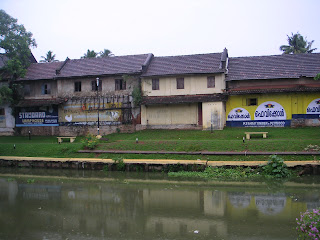 Kasaragod, was formed on 24th May 1984. Kasaragod is derived from the word Kusirakood meaning Nuxvomica forests (Kanjirakuttom). The Kasargod district was was formerly called as Kanjirakuttom. Kasaragod is also the northernmost municipality of Kerala. The Malayalam spoken here has influences from Tulu, Kannada, Urdu, Konkani etc. People from southern Kerala generally find it difficult to understand the Malayalam spoken here.
Kasaragod, was formed on 24th May 1984. Kasaragod is derived from the word Kusirakood meaning Nuxvomica forests (Kanjirakuttom). The Kasargod district was was formerly called as Kanjirakuttom. Kasaragod is also the northernmost municipality of Kerala. The Malayalam spoken here has influences from Tulu, Kannada, Urdu, Konkani etc. People from southern Kerala generally find it difficult to understand the Malayalam spoken here.Kasaragod district has Arabian sea to the west and Western ghats to the east. Kasaragod is known as the land of Gods, forts, rivers, hills and beautiful sea shores the largest and the best preserved Bekal fort is already in the world tourist map. The old temples and mosques are rich in unique architecture and culture of this region. As it was part of Canara, still you can hear Kannada, Tulu, Konkani, Hindi and Urdu in the region apart from Malayalam.
Lying on the north western coast of the State, Kasaragod was famous from time immemorial. Many Arab travellers, who came to Kerala between 9th and 14th centuries AD, visited Kasaragod as it was then an important trade centre. They called this area Harkwillia.
































